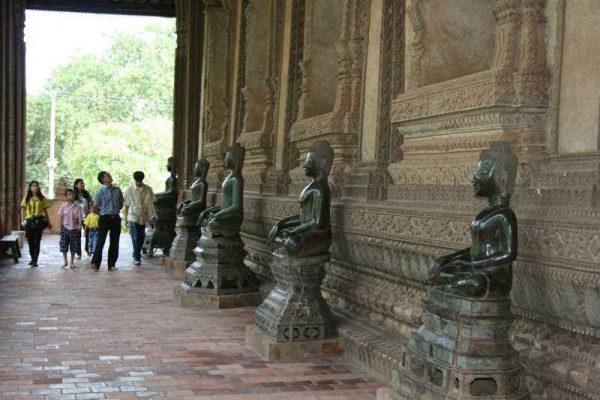Laos has committed to realising the AEC. The country is on track to implement its tariff commitments, which are to be kept no higher than 5 per cent, starting from January 2015. Laos has also made significant progress in other areas. A trade portal, an online platform to boost transparency on trade-related regulations, has been established as part of the ASEAN commitments to create a trade repository. This also paves the way for future implementation of the Trade Facilitation Agreement in the WTO.
Despite the global financial crisis, Laos managed to maintain a robust economic growth rate of 7.6 per cent in 2014, although this represented a slight decline from 8 per cent the year before. The major source of growth is the service sector, chiefly distribution and tourism, which grew at a rate of 9.3 per cent. The industrial sector — in particular, extractive industries, construction, food and non-food processing — came second with a growth rate of 8.7 per cent, while agriculture grew by 2.9 per cent.
Laos’s growth is faster than the average growth rate of developing Asian countries, which is around 6.5 per cent. The country is blessed with abundant natural resources, a low-cost workforce, and proximity to the fast-growing markets of China and ASEAN.
But that impressive growth is also accompanied by some challenges.
Mining and hydropower make up over 60 per cent of the country’s exports. The expansion of extractive industries is an example of the way in which rapid economic growth has made Laos more vulnerable to external shocks. The mining industry has been hit by a decline in global commodity prices. Even though exports of hydroelectricity generate substantial revenue, it creates a source of tension between Laos and its neighbours for environmental reasons.
While investors are attracted by low wages, businesses find it difficult to hire and retain qualified labour. There is a lack of skilled employees to serve manufacturing and other technology-driven jobs.
The country’s immediate neighbours dominate the investment landscape, though the Lao government has tried to broaden its appeal to traditional investors such as Japan and Europe. Foreign direct investment from China, Thailand, and Vietnam makes up over half of total FDI inflows. China surpassed Vietnam in 2013 as the biggest investor, with approved FDI of about US$5 billion. Mining and hydropower continue to be the leading sectors attracting foreign investment, accounting for about half of approved projects.
So what should the Lao government do to entrench economic growth? Supporting business to prepare for the AEC is crucial. This will ensure that the Lao economy maximises potential benefits from regional integration. This requires the government to enhance productivity and competitiveness, improving the business enabling environment, and further deepening economic integration.
With 70 per cent of the population in the agricultural sector, Laos remains primarily an agrarian economy. Raising agricultural productivity is therefore a key priority. In the short term, higher productivity in the agricultural sector will help generate higher incomes and improve the livelihood of farmers. Over the long run, this will eventually lower the need for labour in this sector, freeing up workers to enter more productive employment. The creation of non-agricultural employment opportunities also needs to be supported.
In this respect, barriers to doing business in Laos have to be removed to encourage investment and stimulate productivity enhancement. Laos still ranks poorly in the ease of doing business rankings compiled by the World Bank. The country has improved its ranking from 155th to 148th in 2014. This was thanks to the establishment of a collateral registry and improved disclosure rules for the Lao Securities Exchange. Yet Laos is still lagging behind other ASEAN members. Singapore remains as the top ranked nation while Malaysia and Thailand are at 18th and 26th place respectively.
Laos has made good progress so far but more has to be done. A process-mapping exercise for starting up businesses was completed and a plan for further simplification has been finalised by an inter-ministerial task force. Bold action is needed to further streamline and simplify procedures for business registration, tax registration, and sectoral licensing procedures.
On deeper economic integration, a key challenge is to follow through with fuller implementation of legal reforms enacted as part of WTO accession negotiations over recent years. This is especially challenging in the post-accession phase. Other countries’ experiences show that reform momentum may begin to slow down. And the growing weight of the mining and hydropower sectors in the Lao economy mean that efforts to diversify growth are important.
In a broad sense, 2015 is a year of consolidation for the Lao government. A focus on policy reforms to facilitate economic integration will help Laos lock in its impressive economic growth for the future.
Buavanh Vilavong is a PhD scholar at the Crawford School of Public Policy, the Australian National University. He is a Deputy Director General of the Department of Import and Export at the Ministry of Industry and Commerce, Laos.

